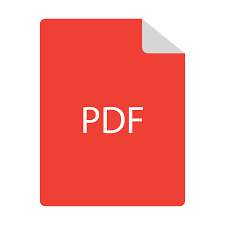After 8 years in the making, PDF 2.0 has finally been released. From new annotations, to digital signatures, to generally making the specification clearer and more concise, there’s been a lot of changes and improvements since 1.7.

As there are too many changes to list in this 984-page behemoth, here is a brief overview of the ones I thought were most important:
Enhanced encryption:
With PDF 2.0 comes a newer, stronger version of the AES encryption algorithm, AES-256. All previous encryption methods have been deprecated. Furthermore, PDF 2.0 supports Unicode passwords too.
New annotations:
New annotation types have been introduced to support projections, rich media and 3D annotations. Rich media has replaced Movie and Sound annotations, providing a single framework for video / audio / 3D / animations / etc. You can even mix video and 3D, such as having a video as a texture on a 3D object…
Geospatial features:
New PDF data structures that support Geospatial coordinate systems (latitude / longitude / altitude), allowing PDF to be extensively used for maps and satellite imagery in both 2D and 3D.
Major enhancements to digital signature technology:
PAdES Compatibility has been added, bringing the capabilities of PDF up to EU and ETSI Digital Signature standards. Long term validation of signatures has also been introduced in the form of Document Security Store (DSS) and Document Time-Stamp (DTS) dictionaries, which replaces the now-deprecated SHA1.
Other features:
Plus, a few honourable mentions:
- Unencrypted wrapper document
- Associated files
- Navigators
- Enhancements for print and rendering-related features
There has been some extensive rewriting / reorganising of large sections of the spec, including:
- Rendering (10.1 & 10.3)
- Accessibility support (14.9)
- Digital signatures (12.8)
- Metadata (14.3)
Finally, some features have been dropped. To name a few:
- XFA Forms
- Movie and sound content (replaced by Rich Media annotations)
- All encryption methods (except AES-256)
- SHA1
You can read more on PDF 2.0 here.
There’s also a great keynote on PDF 2.0 given by the ISO 32000 Project Leaders, Duff Johnson and Peter Wyatt.
Our software libraries allow you to
| Convert PDF files to HTML |
| Use PDF Forms in a web browser |
| Convert PDF Documents to an image |
| Work with PDF Documents in Java |
| Read and write HEIC and other Image formats in Java |

Hi, Is there any alternative to XFA forms in new spec?
While it is not in the spec, you can still use XFA. There is a huge installed base out there and Adobe still supports it in Adobe Experience Manager as do third parties – we still provide tools for it and so does ITEXT.
There is nothing in the actual spec to replace it in the PDF specification, but XFA was never a part of the core PDF reference.